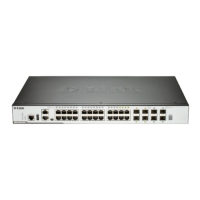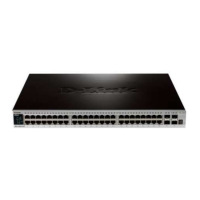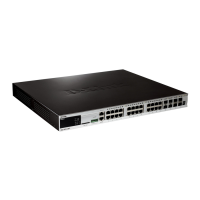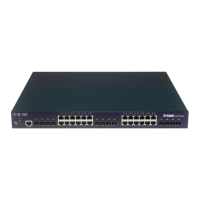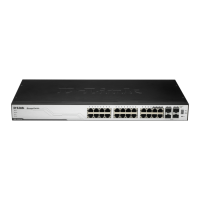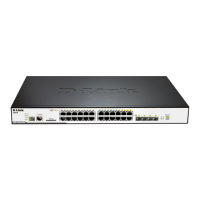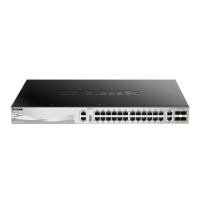DGS-3630 Series Layer 3 Stackable Managed Switch Web UI Reference Guide
344
Select the VRF entry and click the OK button to use the selected VRF entry.
Enter a page number and click the Go button to navigate to a specific page when multiple pages exist.
BGP Reflector Settings
This window is used to display and configure the BGP reflector settings.
To view the following window, click L3 Features > BGP > BGP Reflector Settings, as shown below:
Figure 6-184 BGP Reflector Settings Window
The fields that can be configured in BGP Reflector Settings are described below:
Parameter Description
Route Reflector Cluster ID
Enter the route reflector cluster ID here.
Client to Client Reflection
Select to enable or disable the client-to-client reflection feature here.
Click the Apply button to accept the changes made.
The fields that can be configured in BGP Reflector Client are described below:
Parameter Description
Address Family
Select the address family that will be used here. Options to choose from are:
• IPv4 Unicast - Specifies to use the IPv4 unicast address family in this
configuration.
• IPv4 Multicast - Specifies to use the IPv4 multicast address family in this
configuration.
• L2VPN VPLS - Specifies to use the Layer 2 VPN VPLS address family.
• VPNv4 - Specifies to use the VPNv4 address family.
• IPv6 Unicast - Specifies to use the IPv6 unicast address family in this
configuration.
Neighbor
This is used to assign the specified neighbor as its client. Options to choose from
are:
• IPv4 Address - Select and enter the IPv4 address of the neighboring router
here.
• Peer Group - Select and enter the peer group name that will act as the route
reflector client here.
• IPv6 Address - Select and enter the IPv6 address of the neighboring router
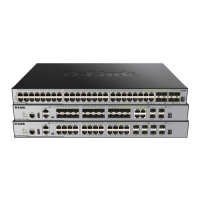
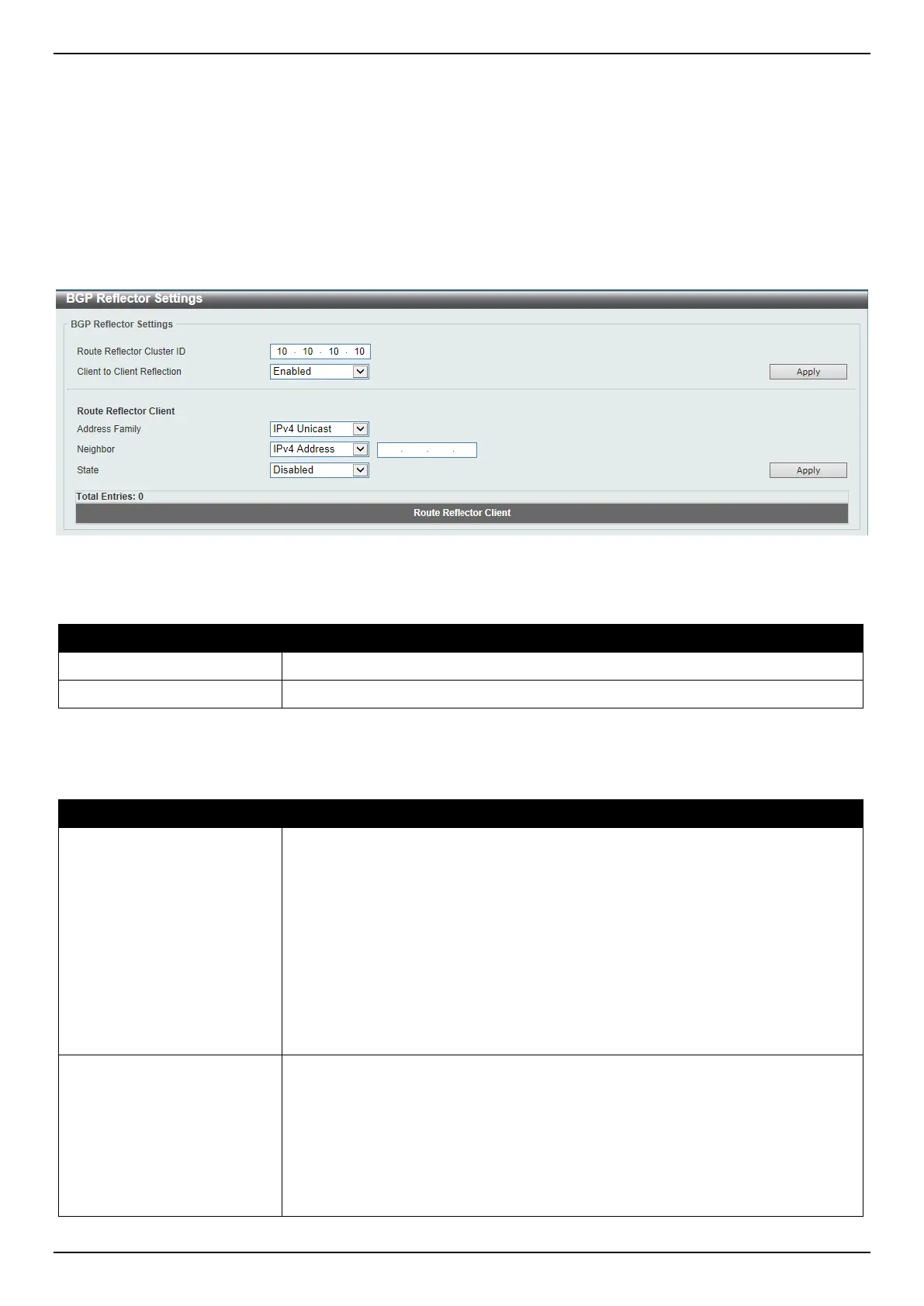